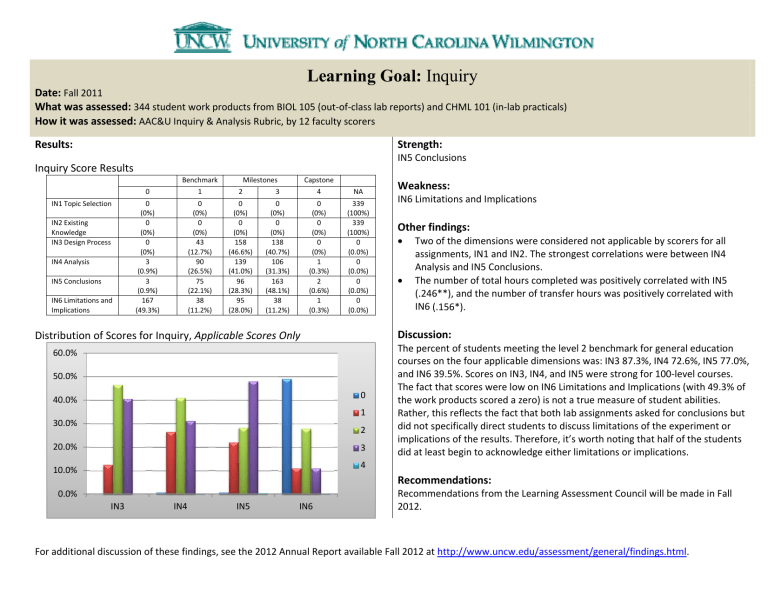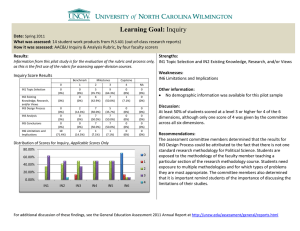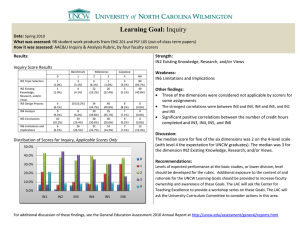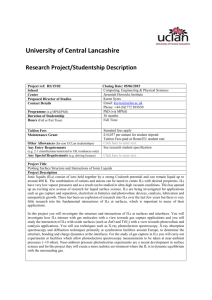Learning Goal: Date: What was assessed:

Learning Goal: Inquiry
Date: Fall 2011
What was assessed: 344 student work products from BIOL 105 (out ‐ of ‐ class lab reports) and CHML 101 (in ‐ lab practicals)
How it was assessed: AAC&U Inquiry & Analysis Rubric, by 12 faculty scorers
Results:
Inquiry Score Results
0
Benchmark
1 2
Milestones
3
Capstone
4 NA
Strength:
IN5 Conclusions
Weakness:
IN6 Limitations and Implications
IN1 Topic Selection
IN2 Existing
Knowledge
IN3 Design Process
IN4 Analysis
IN5 Conclusions
IN6 Limitations and
Implications
60.0%
50.0%
0
(0%)
0
(0%)
0
(0%)
3
(0.9%)
3
(0.9%)
167
(49.3%)
0
(0%)
0
(0%)
43
(12.7%)
90
(26.5%)
75
(22.1%)
38
(11.2%)
0
(0%)
0
(0%)
158
(46.6%)
139
(41.0%)
96
(28.3%)
95
(28.0%)
0
(0%)
0
(0%)
138
(40.7%)
106
(31.3%)
163
(48.1%)
38
(11.2%)
Distribution of Scores for Inquiry, Applicable Scores Only
0
(0%)
0
(0%)
0
(0%)
1
(0.3%)
2
(0.6%)
1
(0.3%)
339
(100%)
339
(100%)
0
(0.0%)
0
(0.0%)
0
(0.0%)
0
(0.0%)
Other findings:
Two of the dimensions were considered not applicable by scorers for all assignments, IN1 and IN2.
The strongest correlations were between IN4
Analysis and IN5 Conclusions.
The number of total hours completed was positively correlated with IN5
(.246**), and the number of transfer hours was positively correlated with
IN6 (.156*).
Discussion:
The percent of students meeting the level 2 benchmark for general education courses on the four applicable dimensions was: IN3 87.3%, IN4 72.6%, IN5 77.0%, and IN6 39.5%.
Scores on IN3, IN4, and IN5 were strong for 100 ‐ level courses.
The fact that scores were low on IN6 Limitations and Implications (with 49.3% of
0
40.0%
30.0%
20.0%
1
2
3 the work products scored a zero) is not a true measure of student abilities.
Rather, this reflects the fact that both lab assignments asked for conclusions but did not specifically direct students to discuss limitations of the experiment or implications of the results.
Therefore, it’s worth noting that half of the students did at least begin to acknowledge either limitations or implications.
10.0%
0.0%
IN3 IN4 IN5 IN6
4
Recommendations:
Recommendations from the Learning Assessment Council will be made in Fall
2012.
For additional discussion of these findings, see the 2012 Annual Report available Fall 2012 at http://www.uncw.edu/assessment/general/findings.html
.





